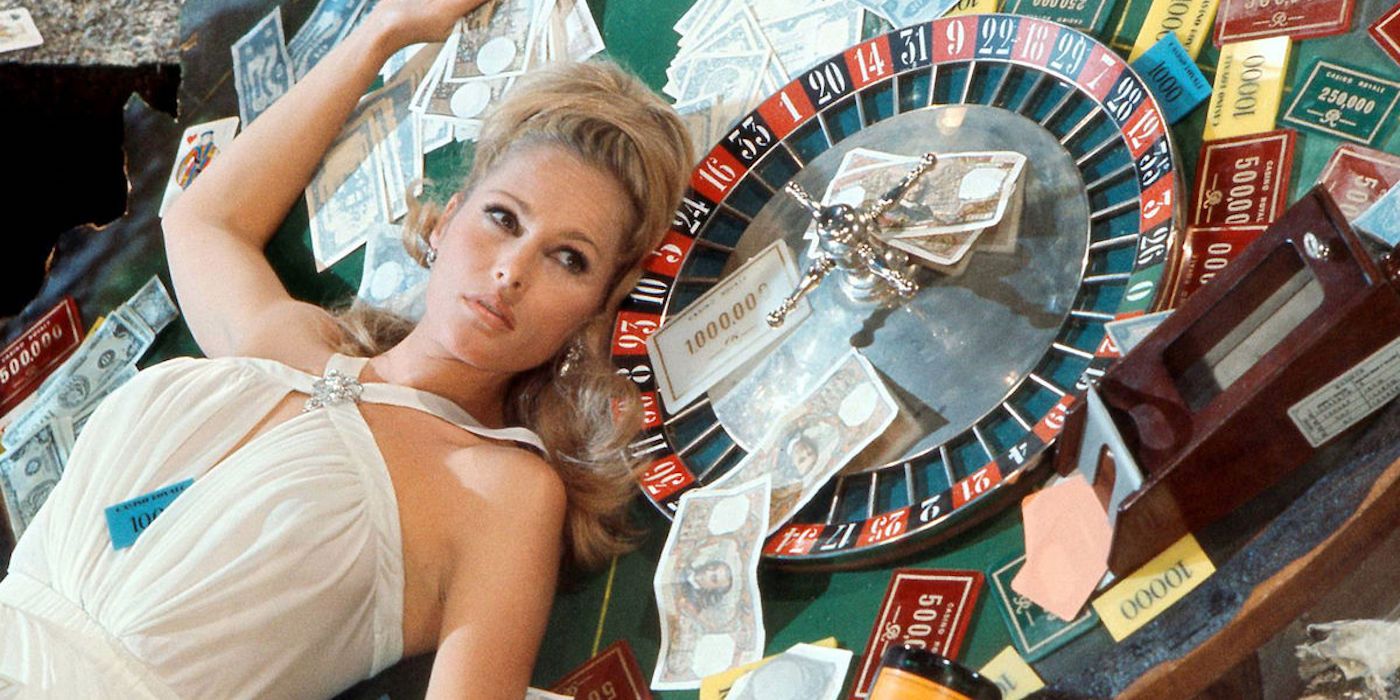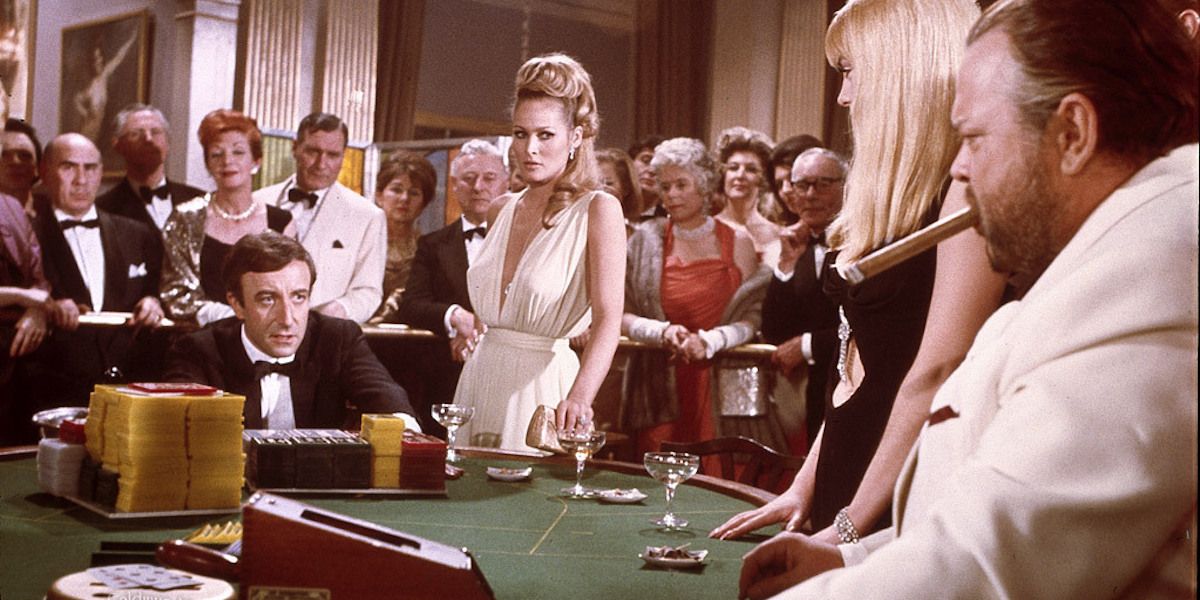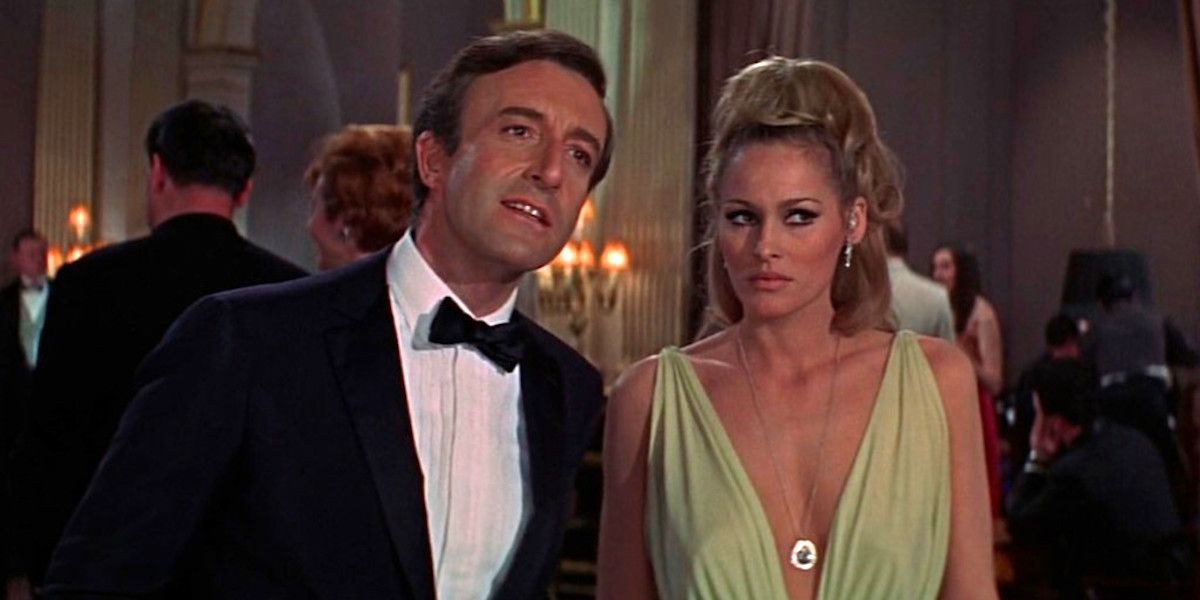There aren’t many examples where two separate films with identical names in the same franchise exist on opposing ends of the critical spectrum, but much like its title character, the James Bond series has never been one to play by the rules. 2006’s Casino Royale was nothing short of a triumph – a stunning return to form that weaponized its stripped-back approach to craft not just some of the most exhilarating action sequences in the entirety of cinema, but also molded them with a surprising amount of thematic depth that (when combined with Daniel Craig’s excellent performance) made its version of Bond a truly fleshed out character in a way we hadn’t seen since 1969’s On Her Majesty's Secret Service. It’s a contender for the best film in the series, and remains the greatest example of the franchise’s unparalleled ability to reinvent itself to ensure its continued relevance in the everchanging cinematic landscape.
And then there’s the other film… that one whose presence has lingered over this series like an unpleasant smell for almost sixty years, and which these days seems to exist solely as the answer to annoying trivia questions designed to trick anyone but diehard fans. The film is (once again) Casino Royale, a 1967 release that marked several firsts for the series. Most notably, it was the first to be produced by someone other than Eon Productions, with that duty falling to Charles K. Feldman. Feldman had acquired the rights to Ian Fleming’s seminal novel in 1960, but a revolving line-up of scripts and growing competition from Harry Saltzman and Albert R. Broccoli saw him squandering his opportunity to make his Bond the gold standard from which everything else would be compared. Indeed, Saltzman and Broccoli had already released four box office sensations by the time Feldman got his cameras rolling, putting him in the daunting position of having to make a Bond film without the established Bond elements – no gun barrel sequence, no signature theme song, no Sean Connery. Trying to imitate the Eon films would be a fool's errand, but Feldman was smart enough to realize this.
Which brings us to his version of Casino Royale, a.k.a. one of the most baffling experiences any moviegoer can subject themselves to. Feldman’s desire to carve out his own place in the spy genre is admirable, but his decision to do that by turning one of its most iconic stories into a comedic farce that resembles an early draft of Austin Powers received an immediate backlash. The biggest issue, however, was the lack of an authoritative figure. Five directors took the helm, each contributing an average of twenty-five minutes to the runtime with little (if any) communication between them. This would be fine if Casino Royale was an anthology film, but since it’s trying to tell a singular narrative, the problems write themselves. The result is a film that never once approaches cohesive, with its disjointed collection of styles and plotlines that spend the entire runtime fighting for attention making the whole endeavor borderline incomprehensible. By itself this would make Casino Royale bad, but when you consider that Feldman managed to attract what feels like half of Hollywood to his pet project, then suddenly it becomes oddly fascinating.
Describing 'Casino Royale's Plot Is No Easy Feat... Assuming It Even Has One
In a film where everything is unintelligible, the plot is the most egregious example. For starters, it’s basically unrelated to the book it takes its title from (no wonder the opening credits describes Ian Fleming’s novel as a mere suggestion). We’re introduced to Sir James Bond (David Niven), a retired spy forced back into service following the assassination of many of MI6’s top agents by the villainous organization SMERSH. His mission appears simple – bring down SMERSH and put a stop to the evil Le Chiffre (Orson Welles) while he’s at it – but the roundabout way he achieves this is anything but. To throw his enemies off the scent, Bond renames every remaining agent as James Bond, giving him (and Feldman) the perfect excuse for 007 to go on numerous adventures without having to explain why the aging original is the only one capable of completing such dangerous assignments.
Not that it really matters. The justification for how these sequences connect is so flimsy you’ll find yourself staring at the screen in utter bewilderment more than once, and it’s not uncommon for major plotlines to quietly disappear with no explanation. For example, the first act is focused entirely on SMERSH using beautiful women to assassinate British agents due to their inability to resist sex. Hardly a subtle parody of one of James Bond’s most defining traits, but it does the job… at least until the film forgets all about it and then that’s the end of that. Such occurrences are common in Casino Royale, and a post-watch trip to the film’s Wikipedia page is all but required to understand what happened. The editing in general is dire, with crucial information being skipped over despite the film acting like it hasn’t (the death of M being the worst example, with the film cutting from a perfectly alive M to Bond offering his condolences to his widow in mere seconds). Much of this confusion stems from behind-the-scenes troubles that prevented Feldman from shooting the entire script, and boy does it show.
'Casino Royale's All-Star Cast Includes Some of the Greatest Actors of Its Era
The film’s most intriguing element comes via its A-list cast. Peter Sellers, Terence Cooper, Woody Allen, Barbara Bouchet (who also appears as Miss Moneypenny’s daughter, the conveniently named Miss Moneypenny), and the original Bond Girl herself Ursula Andress are among the names playing the Bond duplicates, and these represent just a fraction of the recognizable faces who make small – and often perplexing – appearances (such as Deborah Kerr, William Holden, and Peter O'Toole). Surprisingly, all of them remain consummate professionals, delivering decent performances despite the quality of the material that if anything just makes the entire undertaking even more bizarre. Sellers is a particular standout, with his straight-faced demeanor that never breaks even in the face of complete lunacy creating some genuinely hilarious moments. Reportedly he was upset that Casino Royale was a comedy and often rewrote scenes to make them more serious, and there are definitely times when that appears to be true. The baccarat scene between him and Welles (continuing to be one of cinema’s most watchable actors) is a good example of this. The jokes are minimal, the tension is high, the characters evoke their literary counterparts – for a minute, Casino Royale actually feels like a Bond film… and not a half-bad one at that.
And then a UFO lands in the center of London. Casino Royale is a fan of this kind of absurdist humor, and it’s clear that a joke only had to elicit a brief smile from someone on the production team to make the final cut. This isn’t necessarily a bad thing, but not when you’ve got such a diverse range of directors running the show, resulting in a completely slapdash approach. From smutty British sex comedies to pristine Zucker/Abrahams spoofs, Casino Royale has something for everyone… as long as you have a highly eclectic taste in comedy, that is. If not your enjoyment could resemble the most frantic seismograph in the world, with the periodic appearance of a halfway decent line being sandwiched between some of the most excruciating attempts at humor you’ll ever see. Those who suffer from second-hand embarrassment should stay well away.
Despite Its Flaws, There's a Lot of Fun to Be Had With 'Casino Royale'
All of this makes Casino Royale sound like a tortuous watch, and to be fair that’s not wholly inaccurate. And yet, for all its faults, there is something mesmerizing about it. Call it Stockholm syndrome, but Casino Royale is an entity like nothing else, and embracing rather than rejecting the insanity makes for a strangely enjoyable time… assuming you view it as a piece of stream-of-consciousness surrealism, that is. It’s unlikely that Feldman set out to craft a big-budget Dadaist art piece that mocks everything a coherent film should stand for (such theatrics are typically the realm of auteur directors), but it wouldn’t be the first time a work of art outgrew its creator’s intentions to become an entirely different beast. Its myriad of directors doesn’t lend itself well to lucid storytelling, but it does make for a captivating fever dream where no two minutes are alike. Predicting what craziness lies around the corner becomes the film, and knowing that you’re wrong most of the time just adds to the excitement (David Prowse as Frankenstein’s monster? Why not!).
Regardless of Feldman’s intentions, Casino Royale contains enough smatterings of quality to justify a watch, if only for curiosities sake. As previously mentioned, anything involving Sellers or Welles is solid, and there are times when the film’s inherent absurdity is utilized to wonderful effect. The highlight is a mid-film detour where Bond’s daughter, Mata (Joanna Pettet), infiltrates a SMERSH training center in West Berlin – a segment so knowingly ludicrous that it’s legitimately amusing to watch. The outstanding production design also helps, with the training center evoking the feel of Suspiria’s dance school circa its descent into the nightmarish world of German Expressionism. The entire film has an excellent visual aesthetic, complimenting the farcical tone well without ever becoming too absorbed in its own artifice. Similarly, Burt Bacharach’s soundtrack is an upbeat and engaging affair, with the standout track, "The Look of Love", even earning the film a nomination at the Academy Awards for Best Original Song (making it the first Bond film to be recognized in this category). Disconnect your brain from the plot and view Casino Royale as a pure audio-visual sensation, and you’ll be surprised how much there is to like.
Casino Royale can only be enjoyed with a certain mindset. Those expecting a traditional Bond adventure will be turned off by the satirical angle, and those wanting a standard comedy will find its ‘everything but the kitchen sink’ approach overwhelming. However, if you’re willing to accept it on its own terms as a mad celebration of ‘60s excess that also functions as a time capsule for his luxurious period of cinema, then Casino Royale is not without merit. This doesn’t mean it’s a secret absurdist masterpiece – there are too many tedious moments for that to be the case – and if judged purely as a Bond film then its reputation as the franchise’s low point is not ill-gained, but by itself there is some amusement to be had. Besides, it’s not like the Eon films are immune to dalliances in self-parody. At least this one’s willing to acknowledge the silliness.



